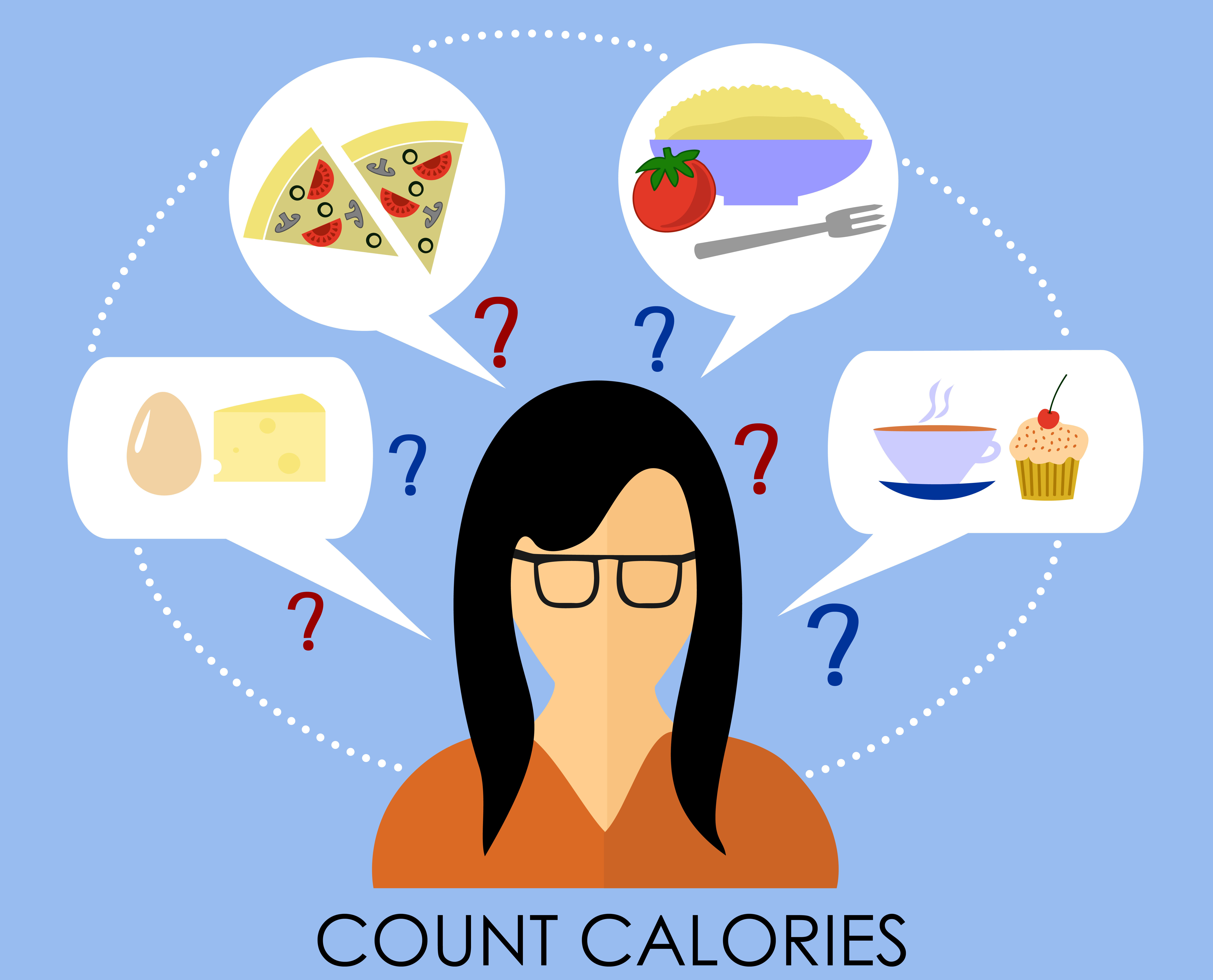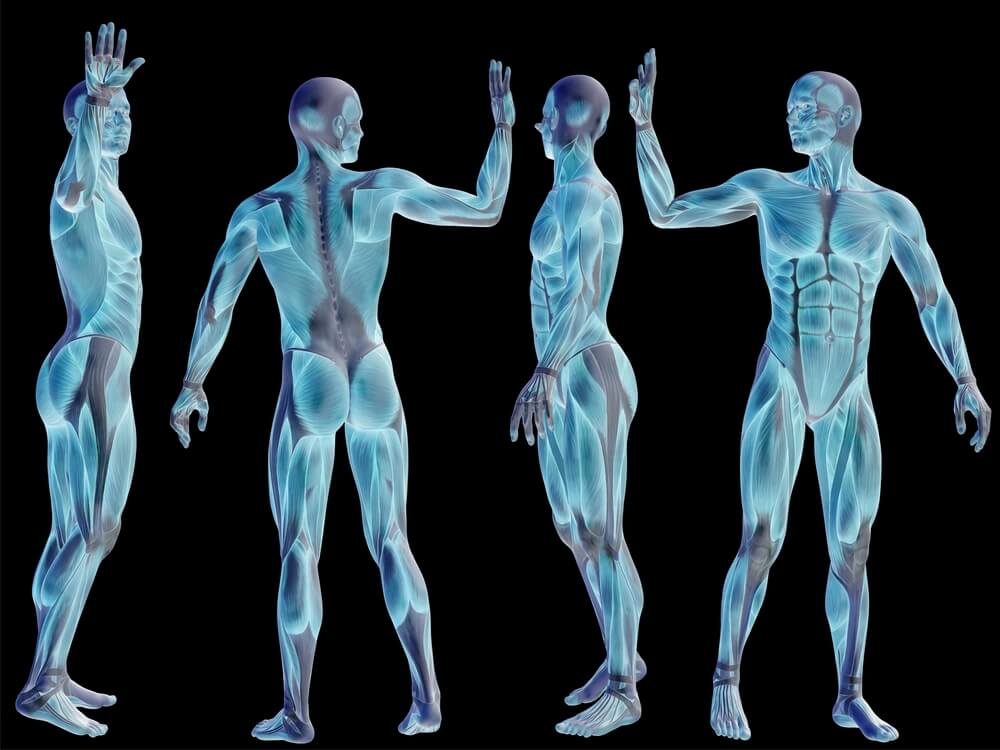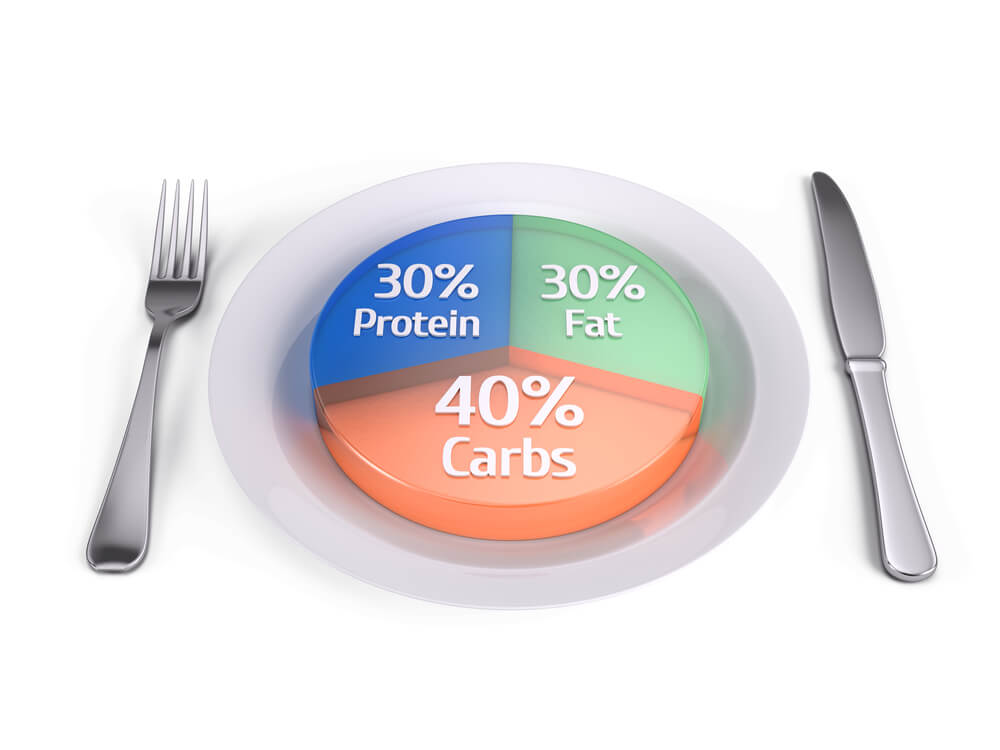
How many calories should I eat to lose weight each day? Do you know how to come up with that number? Don’t worry. We do. And, we’ll give you all the details right here!
Have you ever tried to lose weight?
The majority of Americans have. The solution people most commonly try first is a change in their simple diet plan. Diet is the right place to start. You can exercise all you want, but you can’t outrun the fork. Still, the most common question posed to health professionals is, “How many calories should I eat to lose weight?”
This seems like a simple question, but it is really quite complex because it varies for everyone. If you have never been given a direct answer as to how many calories you need to eat to lose weight, that’s because it depends on your genetic factors, lifestyle, and environment. BBC Knowledge Magazine states that about 20% of the calories you need every day are consumed through physical exertion. About 10% are used to keep your body temperature constant. The remaining 70% are used for basic cellular life processes.
The truth is that there are many factors to consider. We’ll look into all of those different factors to get you the info you need to cut weight.

Your Basal Metabolic Rate (BMR) Is Vital
Your BMR is the rate at which your body burns calories when it’s at rest and only completing normal, vital bodily functions. For instance: Respiration and warming your body. It is important to know your BMR because once you understand it, you will be able to recognize what factors most influence your metabolism. From that point, you can make changes in your calorie intake and achieve weight loss.
As you will see in the following calculations, your age is a factor. This is because the older you get, the fewer calories your body needs. In a WebMD article, Connie Bales, PhD, RD, associate director of the Geriatric Research, Education, and Clinical Center at Durham VA Medical Center said, “We move around less, we have less muscle, and our metabolic rate goes down.”
Your gender also counts. Yes, it’s not fair! Men need 5 to 10% more calories than women do.
Why?
This is the case because men naturally carry more muscle mass and women naturally retain more fat. Muscle mass requires more calories to sustain size. In fact, a person who is very muscular burns more calories just sitting on the couch than those who are less muscular. This is due to the need for the additional fuel.
What’s the lesson here?
Go lift some weights today!
Calculate Your BMR Using The Harris Benedict Equation
The Harris Benedict equation is one method to calculate your BMR and daily calorie requirements. Notice that there are separate equations for men and women. Make sure you use the correct equation.
Men who want to calculate their BMR using the Harris Benedict equation should use the following formula: (12.7 * your height in inches) + (6.23 * your weight in pounds) – (6.8 * your age in years). Add 66 to the total for the BMR.
Here’s an example. Let’s calculate the BMR for a 30-year-old, 6’1” (73”) man who weighs 218 pounds. It would look like this: 12.7 times 73 (inches) equals 927.1. Then, multiply 6.23 by 218 (pounds) to get a total of 1,358.14. Your third calculation is 6.8 multiplied by 30 (years). This third number comes to 204.00.
Take the first two numbers (927.1 and 1,358.8) and add them up. They total 2,285.9. Then take that number (2,285.9) and subtract the third number you calculated (204.00). That works out to 2,081.9. From there, add the 66 (constant given above). The total is 2,147.9 calories. That is the number of calories needed to maintain normal body function each day not including additional physical activity.
Women who want to calculate their BMR using the Harris Benedict equation should use the following formula: (4.7 x your height in inches) + (4.35 x your weight in pounds) – (4.7 x your age in years). Add 655 to this total for the BMR.
For example: Let’s calculate the BMR for a 36 year-old, 5’5” (66 inch tall) woman who weighs 135 pounds. It would look like this:
4.7 x 66 (inches) = 310.2
4.3 x 135 (pounds) = 580.5
4.7 x 36 (years of age) = 169.2
310.2 + 580.5 = 890.7
890.7 – 169.2 = 721.5
721.5 + 655 (constant given above) = 1,376.5
The BMR for the woman in our example is 1,375.5 calories. That is the amount needed to maintain normal body function each day not including additional physical activity.

Your Level of Physical Activity Does Matter
Everyone knows the more you exercise, the more calories you burn.
But, do you know how many more calories you should consume based on your physical activity?
Now that you know your BMR, you can determine your additional caloric intake based on your physical activity.
Let’s stay consistent and use the Harris-Benedict equation to calculate how many more calories you should be consuming. Be honest with yourself about your level of physical activity.
Are you sedentary, lightly active, moderately active, very active or extra active each day?
For those who are sedentary (meaning little to no exercise), multiply your BMR by 1.2. If you are lightly active (you exercise about one to three days each week), you should multiply your BMR by 1.375. Moderately active (you exercise moderately and/or play sports three to five days per week) means you should multiply your BMR by 1.55. Very active (you engage in strenuous sports or intense exercise six or seven days a week) means you should multiply your BMR by 1.725. Extra active (you engage in very physically challenging jobs or exercise) means you should multiply your BMR by 1.9.
Using our sample BMR calculation for the man in the previous section, you would start with his BMR of 2,147.9. Let’s say he claims to be very active. You would multiply 2,147.9 x 1.725. This yields 3,705.13 calories per day. That should be his caloric intake.
Some also ask should I build muscle or lose fat first?
Now that you know how many calories per day your body needs to maintain its current state, you must learn how to manipulate calories to lose weight.

Cut The Right Amount Of Calories To Lose Weight Safely
Many people expect to lose large amounts of weight as soon as they start eating right and exercising. In reality, it takes time. To see dramatic results it can take 12 weeks or more. Don’t be discouraged.
Losing weight needs to be done safely for the results to stick. Eating healthy needs to become your lifestyle, not a temporary diet. Otherwise, the weight will return.
The Mayo Clinic confirms that to lose one to two pounds each week, you need to burn 500 to 1,000 calories more than the amount you consume each day through regular exercise and a lower calorie diet. Start on the lower end. First, cut 500 calories. It won’t be as big of a shock to your body, thus making the transition easier.
If you try to kill yourself in the gym and cut food on day one and you haven’t cut calories or exercised in months or years, you’re going to either hurt yourself or feel burned out rather quickly. Ease in so you have stamina for the long haul.

Manipulating Calories By Understanding Macronutrients
The Office of Disease Prevention and Health Promotion says, “diet-related health problems [are] persisting at high levels, trends in food intake over time show that, at the population level, Americans are not consuming healthy eating patterns.”
You should already understand that you are not going to be able to lose weight by consuming all of your calories through donuts, pizza and sugary drinks. Are you ready to ditch the artificial drinks for fresh healthy smoothies? This amazing blender is a great addition to pursue a healthier lifestyle! Therefore, you must understand how to break down calories based on macronutrients, or proteins, fats and carbs.
Science Learning defines macronutrients as the “nutrients required in large amounts that provide the energy needed to maintain body functions and to carry out the activities of daily life.” Let’s take a look at each macronutrient because they hold different caloric weights.
Fats are a concentrated energy source that aids our bodies in proper functioning such as absorbing vitamins effectively, supporting our heart and immune system and protecting vital organs by cushioning them. One gram of fat contains 9 calories. Proteins are large amino acid molecules that help our body’s structure, cells, tissues and organs to function properly. One gram of protein has 4 calories. Carbs are our main source of energy. Energy is derived from the starches and sugars in vegetables, fruits and dairy products. One gram of carb contains 4 calories.
Now you need to break your daily calories allotment into a macronutrient ratio designed to lose weight. Most people who are struggling to lose weight have an endomorphic physique. This is a round physique with underdeveloped muscles. This body type carries higher proportions of fatty tissue and gains weight easily. Endomorphs usually have a low tolerance for carbs meaning carbs are the culprit for staying overweight. A good macronutrient ratio for endomorphs is 35% protein, 25% carbs and 40% fat.

Change Your Macro Ratio Into Grams Of Food Based On Needs
You have all the info you need to calculate how much of each macronutrient you need to eat daily to effectively lose weight. Here are the steps using the very active man’s info from earlier: The ratio is 35% protein, 25% carbs and 40% fat. His caloric intake is 3,705.13 .
A total of 35% of his calories will come from protein. So take the 3,705.13 and multiply that by 0.35. The total comes to 1,296.80. Since there are 4 calories per gram of protein that means the total amount he needs is 324.20 grams of protein per day (1,296.80 divided by 4 which totals 324.20).
A total of 40% of his calories come from fat. Take the 3,705.13 and multiply that by 0.4. The total comes to 1,482.05. There are 9 calories per gram of fat, so the total amount he needs is 165 grams of fat per day (1,482.05 / 9 = 165).
A total of 25% of his calories come from carbs. Use the 3,705.13 number and multiply that by 0.25. The total is 926.28. There are 4 calories per gram of carbs, so the total he needs is about 231 grams of carbs per day (926.281 / 4 = 231).
Keep in mind that this ratio may not work for you. You may need to manipulate it. Make sure that if you are going to reduce your calories that you update your calorie intake before plugging them into the macronutrient ratios. Also, don’t forget that this was for a very active man. Most people aren’t that active. Don’t expect to consume
Don’t expect to consume this many calories and lose weight if you aren’t very active.
Registered Dietitian To The Rescue
Is this all too overwhelming for you?
An easier option than figuring it all out by yourself is to hire a registered dietitian. They can help you with caloric needs, calorie adjustments when you need them, foods to prepare based on your likes and dislikes and in aiding you if you have special dietary needs (like allergies or medical conditions that need to be considered). Most importantly, they can help you determine the number of calories that you should eat to lose weight based on you!
The Academy of Nutrition and Dietetics has an online catalog of registered dieticians that you can search by zip code. You may want to further investigate by taking the list of dietitians to your doctor and asking if they know or recommend any of them. If you are a member of a gym, ask the employees there. Sometimes they have one housed right there in your gym or they may be aware of who is good via word of mouth.
Be sure to interview any dieticians that you are considering. Ask about their philosophy, certification and whether they have any special skills. You should also ask how much they charge and what you get for your money. It may not be a bad idea to ask about group rates.
Conclusion
Weight loss is a constant challenge for a large percentage of Americans. The Centers for Disease Control and Prevention states that “more than one-third (34.9% or 78.6 million) of U.S. adults are obese.” With that said, weight loss is a worthy battle because it directly impacts you, your family, your health and your longevity.
Learning how many calories you should consume each day to lose weight is just the tip of the iceberg. Let your new knowledge lead you to live an overall healthy lifestyle.
By Sarah Chadwell
Latest posts by Sarah Chadwell (see all)
- Summer Workout Plan To Lose Weight And Diet Guide - Apr 17, 2017
- The Best Valentine’s Day Workout - Feb 13, 2017
- Top Reasons Your Resolutions Have Already Been Broken And How To Get Back On Track - Jan 31, 2017











[…] your body breaks down muscle fibers during lifting, the body has to burn extra calories to repair the damaged areas. This is turn causes your body to burn more calories, even after you […]
[…] After all, wedding season (or bikini season, or showing off shirtless mirror selfie season) is coming up, and you want to drop those extra pounds to really look toned and ripped. Everyone always asks how many calories should I eat to lose weight? […]
[…] After all, wedding season (or bikini season, or showing off shirtless mirror selfie season) is coming up, and you want to drop those extra pounds to really look toned and ripped. Everyone always asks how many calories should I eat to lose weight? […]
[…] picking a juice diet or a recipe, keep in mind the overall calorie intake you need to lose weight. The fewer calories you consume juicing, the more rapidly you’ll lose […]
[…] do so, you’ll need to use Calorie Calculator—or a similar food energy converter—to figure out how much you need to eat to maintain […]
[…] do so, you’ll need to use Calorie Calculator—or a similar food energy converter—to figure out how much you need to eat to maintain […]
[…] do so, you’ll need to use Calorie Calculator—or a similar food energy converter—to figure out how much you need to eat to maintain […]
[…] it is a very normal question asked by different people who are suffering from obesity that how many calories should i eat to lose weight? A man needs an average 2500 calories per day and for a woman, it is about 2000 calories. But for a […]
[…] to Healthline (2018), an average woman needs to eat around 2,000 calories per day to maintain their weight. Cutting this down to 1,500 calories a day will help shed one pound of […]
[…] single can of Coke contains 150 calories. If you drink two of these a day that’s 300 calories. Cut the two cans out and that’s 2,100 […]
[…] loss is only caused by burning more calories than you bring in. It’s all about […]
[…] loss is only caused by burning more calories than you bring in. It’s all about […]
[…] loss is only caused by burning more calories than you bring in. It’s all about […]
[…] loss is only caused by burning more calories than you bring in. It’s all about […]
[…] loss is only caused by burning more calories than you bring in. It’s all about […]
[…] to Healthline (2018), an average woman needs to eat around 2,000 calories per day to maintain their weight. Cutting this down to 1,500 calories a day will help shed one pound of […]
[…] Most people exercise mainly to burn calories. So, if such an idea is your objective, then just avoid outdoor running sessions. Resistance from the wind outside and other agents forces outside runners to work extra harder to lose significant calories. […]
[…] Most people exercise mainly to burn calories. So, if such an idea is your objective, then just avoid outdoor running sessions. Resistance from the wind outside and other agents forces outside runners to work extra harder to lose significant calories. […]
[…] Most people exercise mainly to burn calories. So, if such an idea is your objective, then just avoid outdoor running sessions. Resistance from the wind outside and other agents forces outside runners to work extra harder to lose significant calories. […]
[…] Most people exercise mainly to burn calories. So, if such an idea is your objective, then just avoid outdoor running sessions. Resistance from the wind outside and other agents forces outside runners to work extra harder to lose significant calories. […]
[…] Most people exercise mainly to burn calories. So, if such an idea is your objective, then just avoid outdoor running sessions. Resistance from the wind outside and other agents forces outside runners to work extra harder to lose significant calories. […]
[…] Most individuals work out primarily to burn calories. So, if such a concept is your goal, then simply prevent outside running sessions. Resistance from the wind outdoors and other representatives forces outside runners to work additional more difficult to lose substantial calories. […]
[…] Most people exercise mainly to burn calories. So, if such an idea is your objective, then just avoid outdoor running sessions. Resistance from the wind outside and other agents forces outside runners to work extra harder to lose significant calories. […]
[…] Most people exercise mainly to burn calories. So, if such an idea is your objective, then just avoid outdoor running sessions. Resistance from the wind outside and other agents forces outside runners to work extra harder to lose significant calories. […]
[…] are so many different ways to count calories. People often wonder, do you weigh your meat before or after you cook it? What really counts as […]